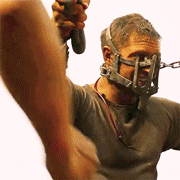- Pththya-lyi
- Nov 8, 2009
-

THUNDERDOME LOSER 2020
|
What's cool about the myth of Theseus and the Minotaur is how much of the story maps to archeological discoveries in Crete
Bull stuff -> Reliefs and sculptures featuring bulls
Labyrinth -> Maze-like palaces
Man-eating monster -> Evidence of child sacrifice and cannibalism
|
 #
¿
Oct 14, 2017 05:55
#
¿
Oct 14, 2017 05:55
|
|
- Adbot
-
ADBOT LOVES YOU
|

|
|
#
¿
May 17, 2024 15:58
|
|
- Pththya-lyi
- Nov 8, 2009
-

THUNDERDOME LOSER 2020
|
Not quite Bronze Age collapse time, but still interesting:
Wikipedia posted:Anemospilia was first excavated in 1979 by the Greek archaeologist Yannis Sakellarakis. The temple was destroyed by earthquake and fire around 1700 BC, about the same time as the destruction of the first palaces. The temple was found in a ruined state with stone walls only reaching hip height. Traces of ash and charcoal were found on the ground, and from this, one can postulate that the building was burnt down.
Finds excavated from Anemospilia are at the Heraklion Archaeological Museum.
The temple is set out with three chambers and one annex that leads into them, each chamber has something somewhat unusual about them inside it.
East chamber
In the east chamber, ruins of a stepped altar were found on the Southside of the room, and on it were many offerings. There were the remains of many vessels of pottery (pithoi) found on the floor, and traces of milk, honey, grains, and peas were found in the bottom of the jars. When the pottery vessels were reconstructed,the scene carved into some of the pottery shows a religious ritual.
Annex
In the annex, a body was found, whose bones were so smashed, especially the pelvic bones, that it was impossible for anyone to identify the gender of the body, showing that the corpse had a boulder or rock dropped onto it. Around the body were fragments of smashed pottery. The position of the body indicates that the person was running from the central chamber at the time of death.
Central chamber
In the central chamber, an altar of the south side of the room was found, made from the hewn rock of the sacred hillside. On it stood a pair of clay feet that had been the idol's base, as well as bits of burnt wood. The idol, or Xoanon (Greek for statue), would have been life-sized and predominantly made of wood, and the ash on the ground suggests that it was burned when the temple was. At the base of the altar were found the remains of more than 400 pottery vessels. Close to the Xoanon there was a mound, a piece of hillside rock, a symbol of the earth, which, along with the sea and the sky, the Minoans considered to be the eternal elements of the world. The sacred stone had been an important part in rituals, for over it libations were poured to the deity.
Western chamber
In the western chamber, two skeletons were found on the floor, one in the south west corner of the room This body was of a 28-year-old female; because the average life expectancy in ancient civilisations was around 55, she would have been a middle aged woman. She could have been a high priestess of some sort.
The other skeleton was that of a male, he was aged in his late thirties, and 183 cm tall, and powerfully built, he was lying on his back with his hands covering his face, as if to protect it. The tall man had a ring made of iron and silver on the little finger of his left hand and on his wrist was an engraved seal of “exceptional artistic merit”, this would have obviously been very valuable. His legs were broken and his body was found near the centre of the room next to a platform, at the base of the platform was a trough.
On top of the platform another body was found. This was a body of an 18-year-old male; he was found in the foetal position, lying on his right side. Amongst the bones was found an ornately engraved knife, it was 40 cm long and weighing more than 400g. Each side of the blade had an incised rendering of an animal head, the snout and tusks of a boar, ears like butterfly wings and slanted eyes like a fox. His legs were forced back so that his heels were almost touching his thigh, indicating that they were tied there.
Apparently a lot of archaeologists think the "knife" was just a spearhead that happened to fall down from a shelf onto the 18-year-old and that there's no evidence the platform was an altar, but come on, they totally sacrificed that kid and the gods found the sacrifice unworthy
Pththya-lyi fucked around with this message at 07:15 on Oct 14, 2017
|
 #
¿
Oct 14, 2017 06:07
#
¿
Oct 14, 2017 06:07
|
|
- Pththya-lyi
- Nov 8, 2009
-

THUNDERDOME LOSER 2020
|
It feels like you have to add a lot of supposition in a story about a temple we know was destroyed in an earthquake in order to come out with an answer other than that all of the people there died when a building fell on them
That or the Sea People
I'm not really saying they definitely sacrificed that kid right before/during the quake, I just like to imagine that's the case.
Why you gotta harsh my buzz
|
 #
¿
Oct 15, 2017 16:44
#
¿
Oct 15, 2017 16:44
|
|



